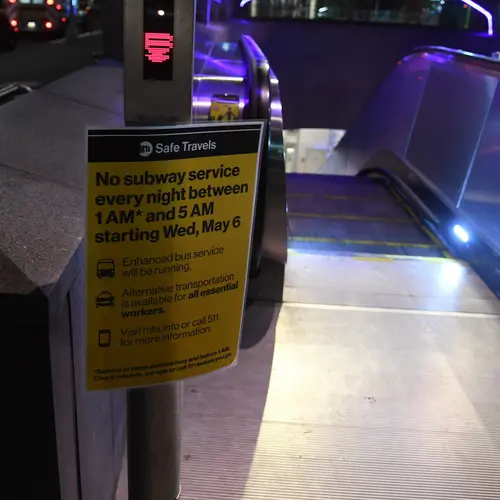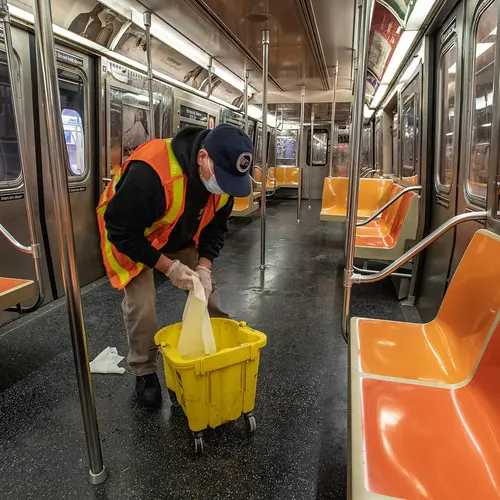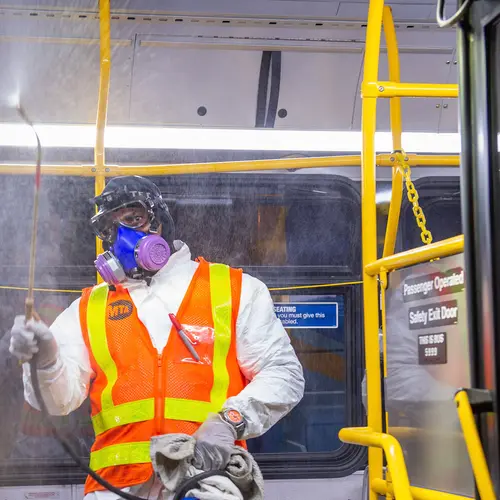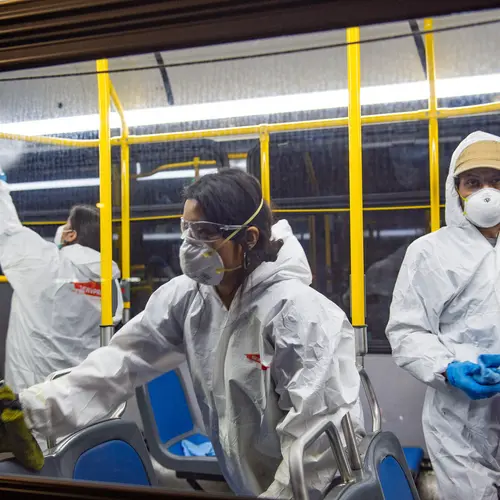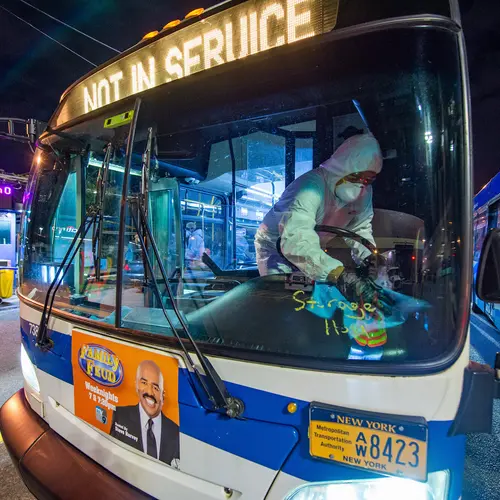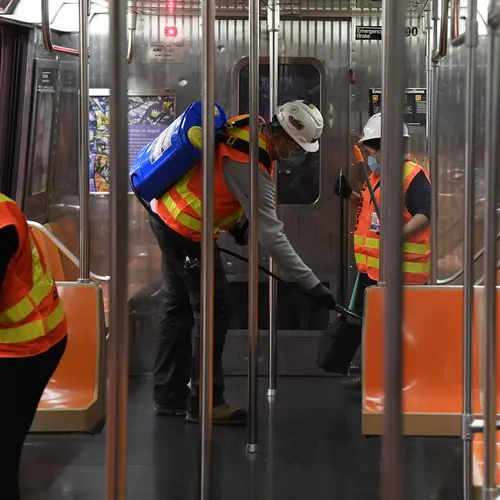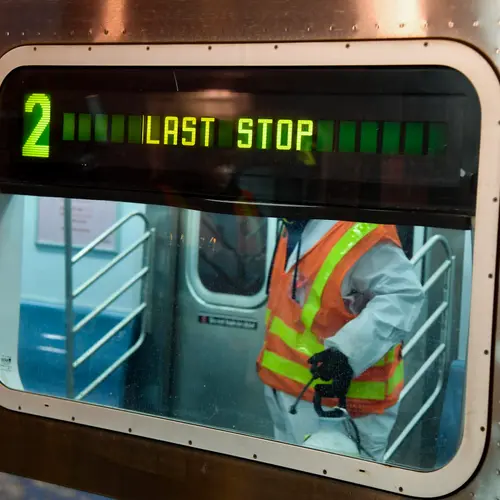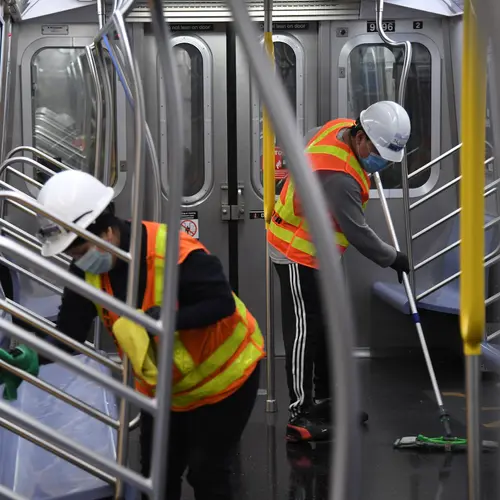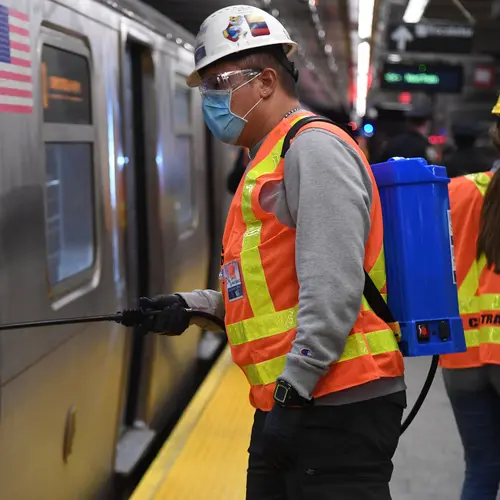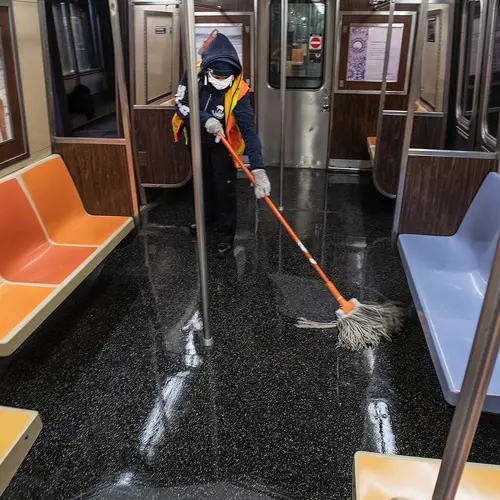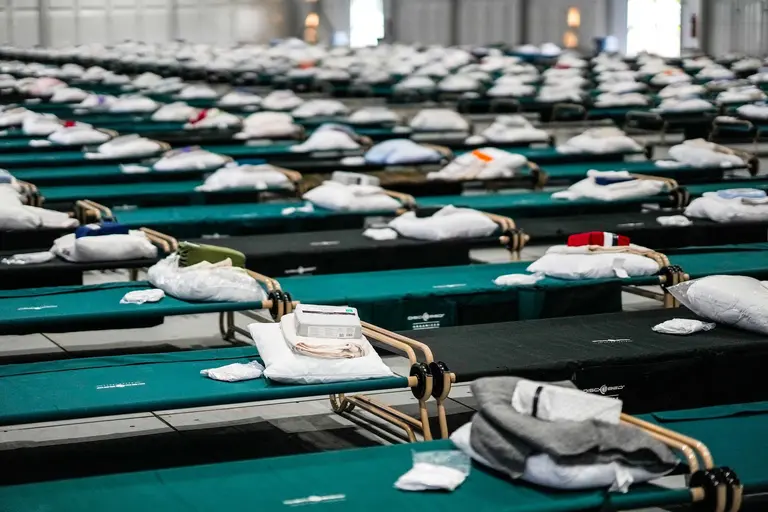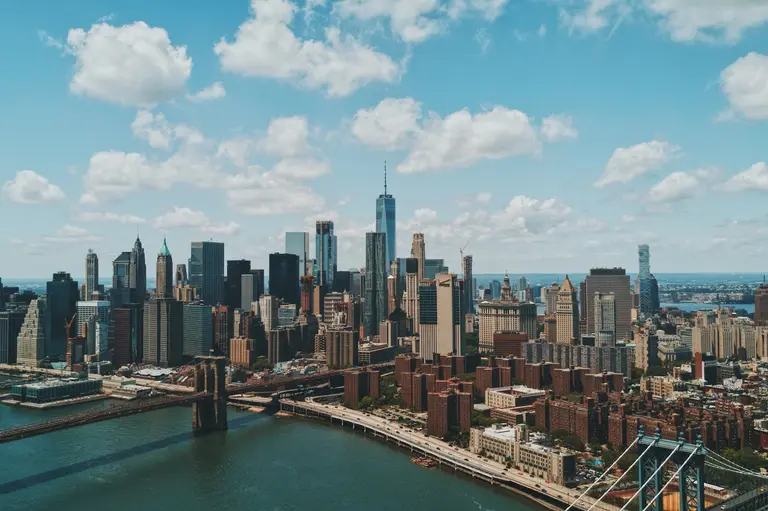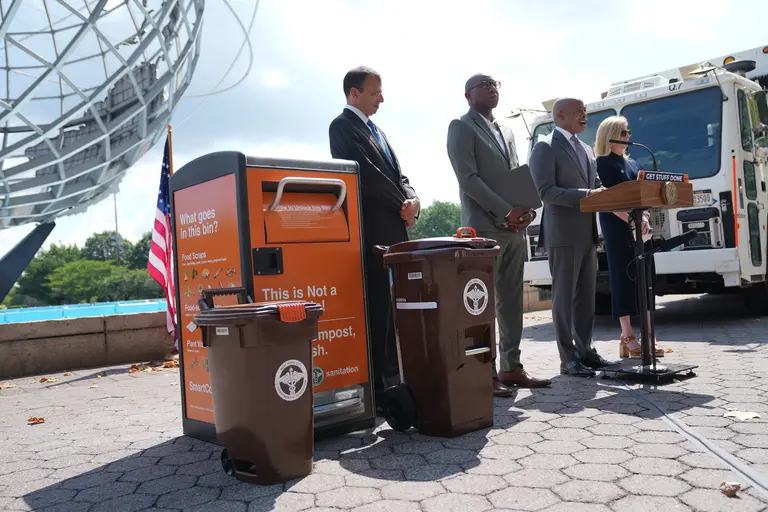NYC subway shuts down for first time in history; see the COVID-19 disinfection plan in action

Photo: Marc A. Hermann / MTA New York City Transit
For the first time in its 115-year history, the New York City subway system shut down overnight on Wednesday. The closure, which will occur daily from 1 a.m. to 5 a.m., is part of a new plan to disinfect every car and station to stop the spread of the coronavirus and protect essential workers. The Metropolitan Transportation Authority is increasing bus service to serve essential workers, adding 344 buses to the current 235 that run during that early morning time frame. For-hire car service will also be offered to employees who are unable to use the bus for their commutes.
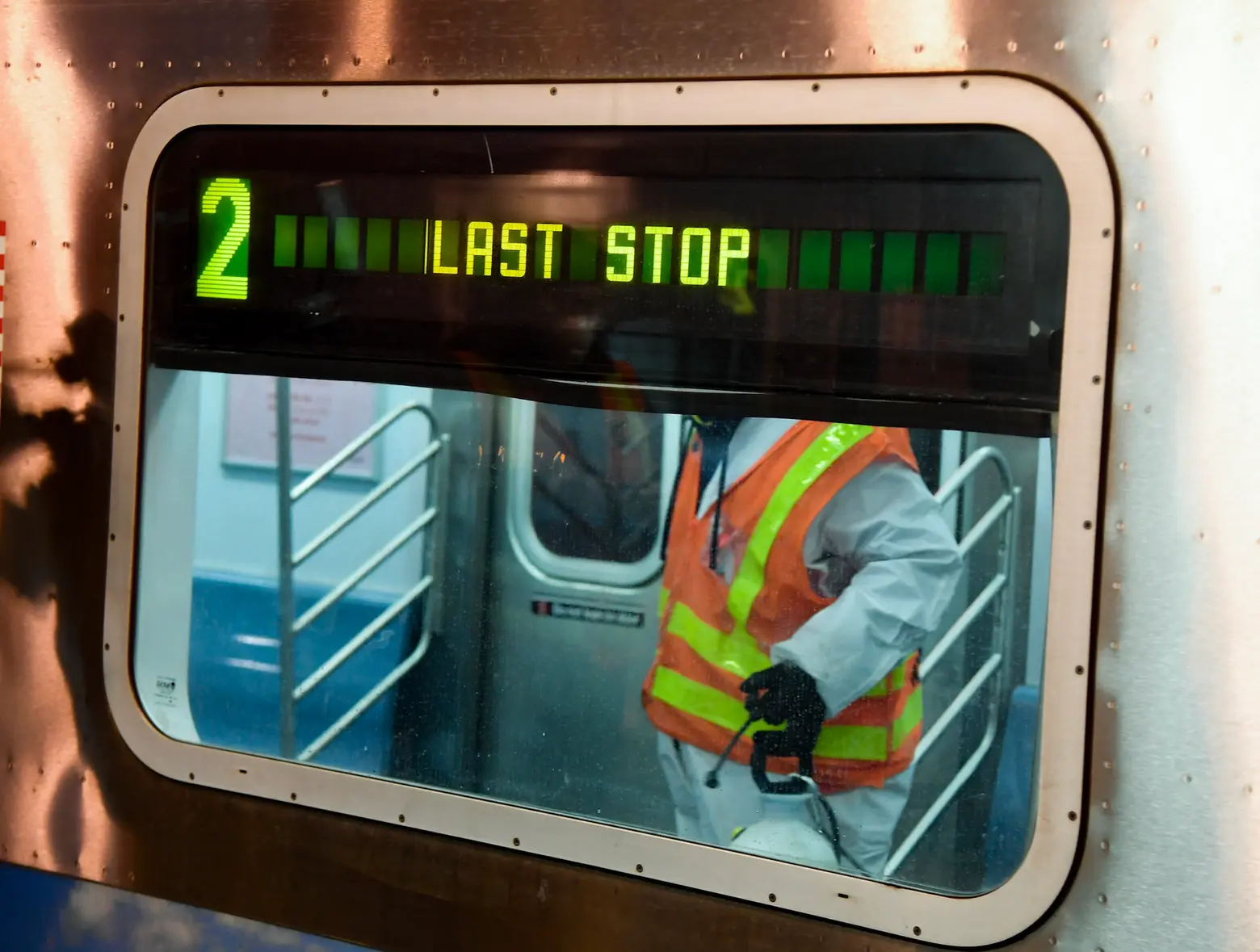
Photo: Marc A. Hermann / MTA New York City Transit
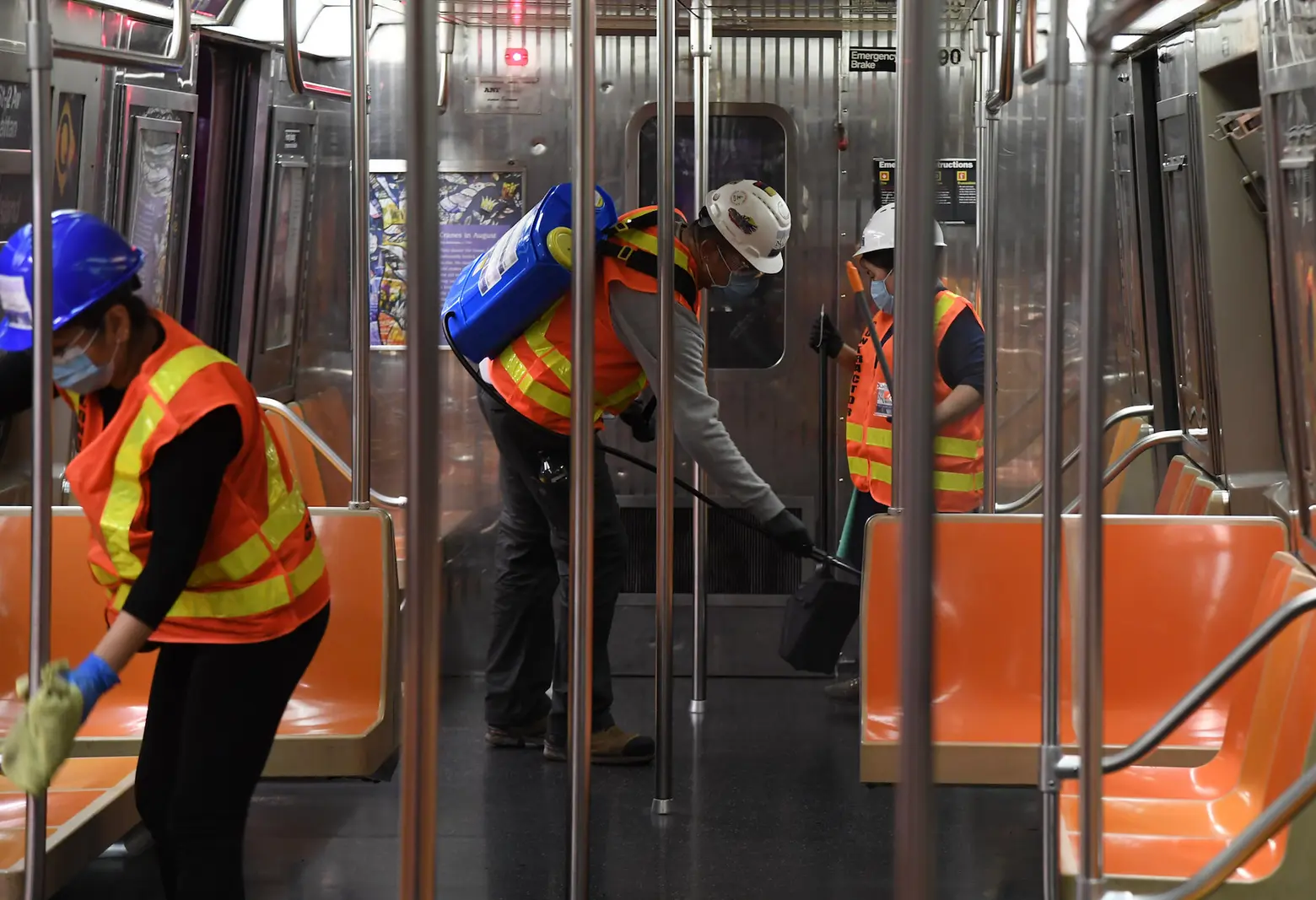
Photo: Marc A. Hermann / MTA New York City Transit
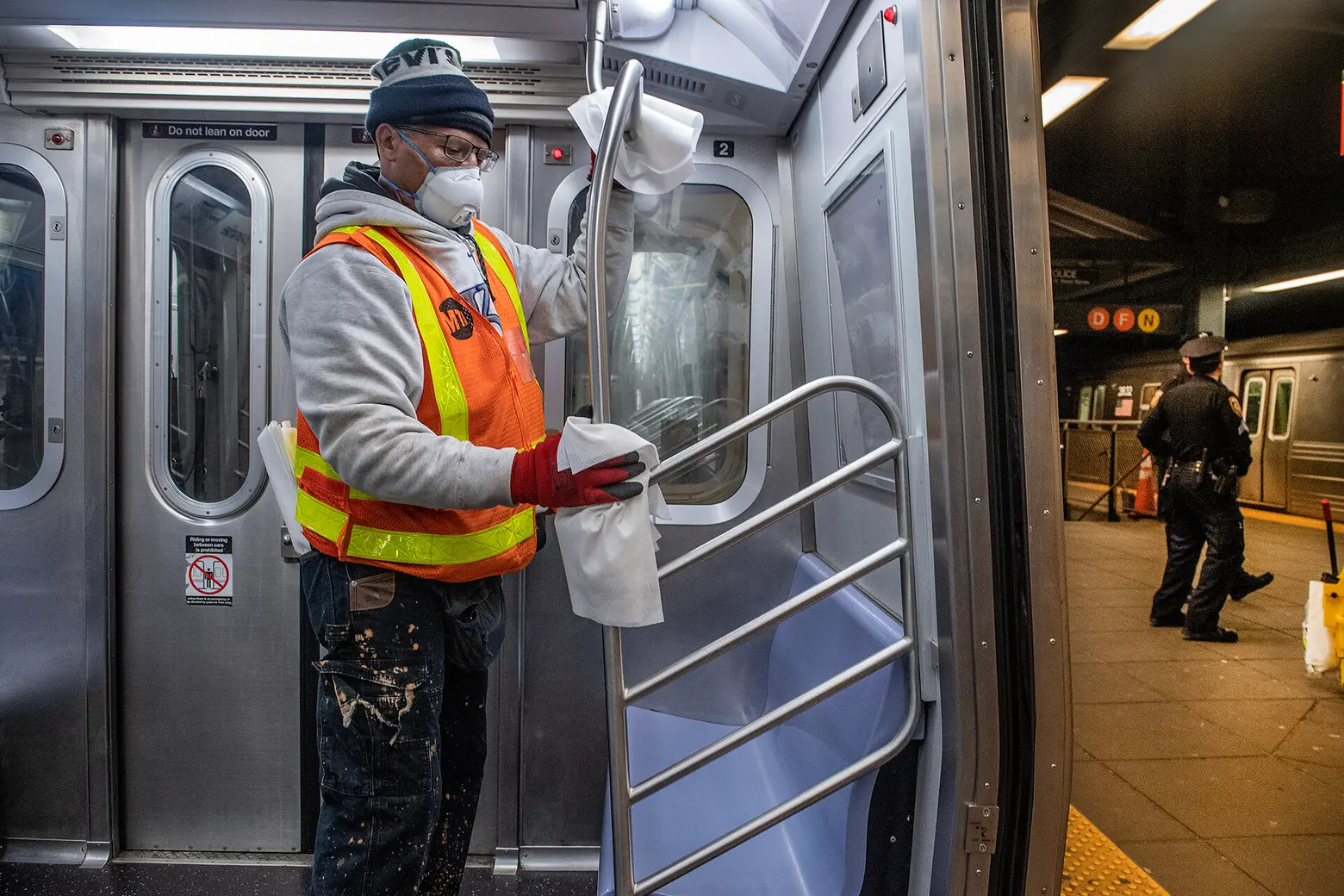
Photo: Patrick Cashin / MTA New York City Transit
Public transit workers have been hit particularly hard by COVID-19; more than 100 workers have died from the virus. The MTA did not distribute protective gear for transit workers until the first week of April, about a month after the city’s first case was reported.
“The safety of our customers and employees is always our highest priority,” MTA Chair and CEO Patrick Foye, said in a press release. “Overnight closure of the subway will allow us to take our cleaning operation to a never-before-seen level. We will more aggressively and efficiently disinfect our full fleet of rolling stock every single day. Touch points at stations will be cleaned twice daily.”
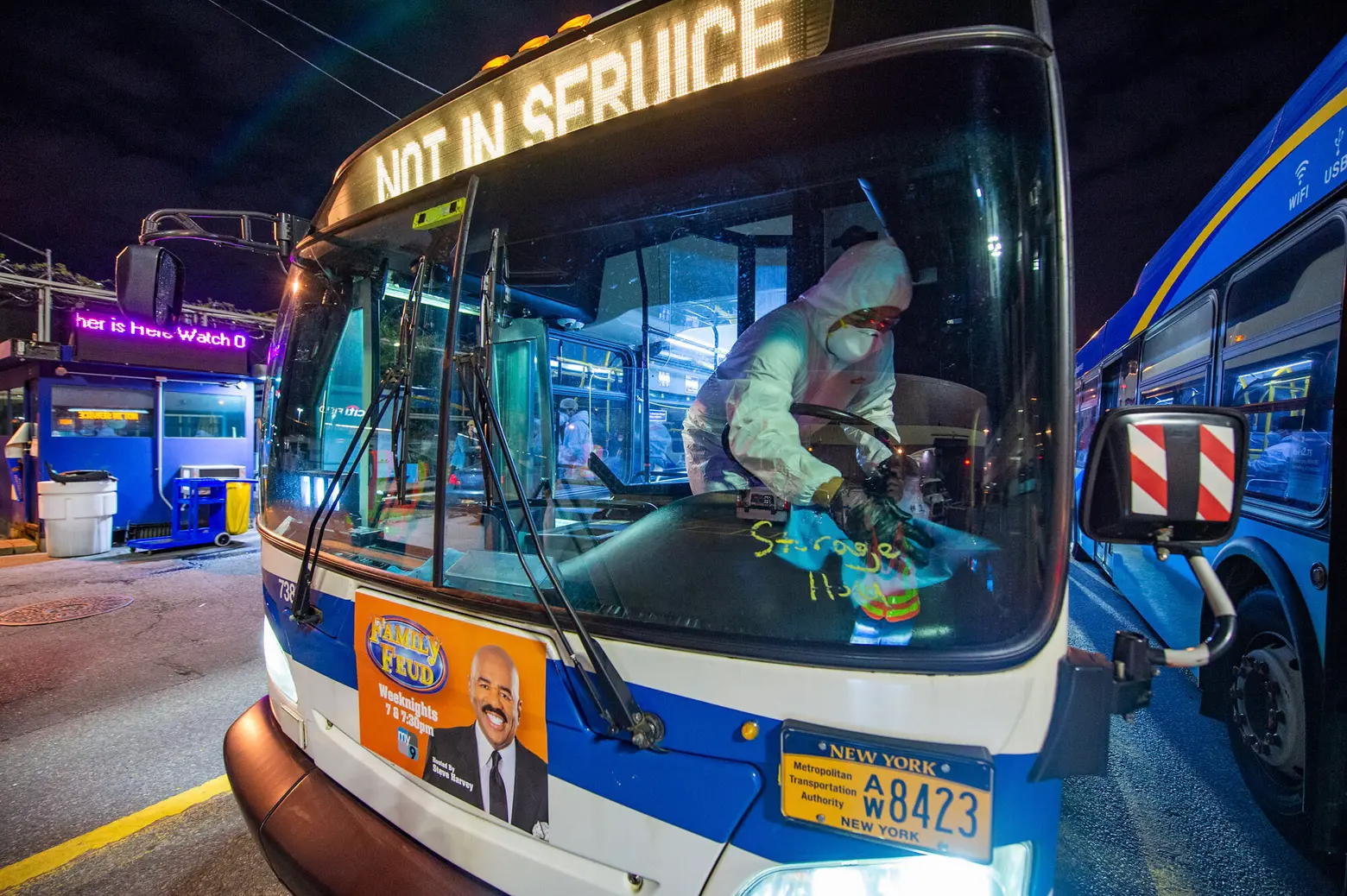
Photo: Trent Reeves / Metropolitan Transportation Authority
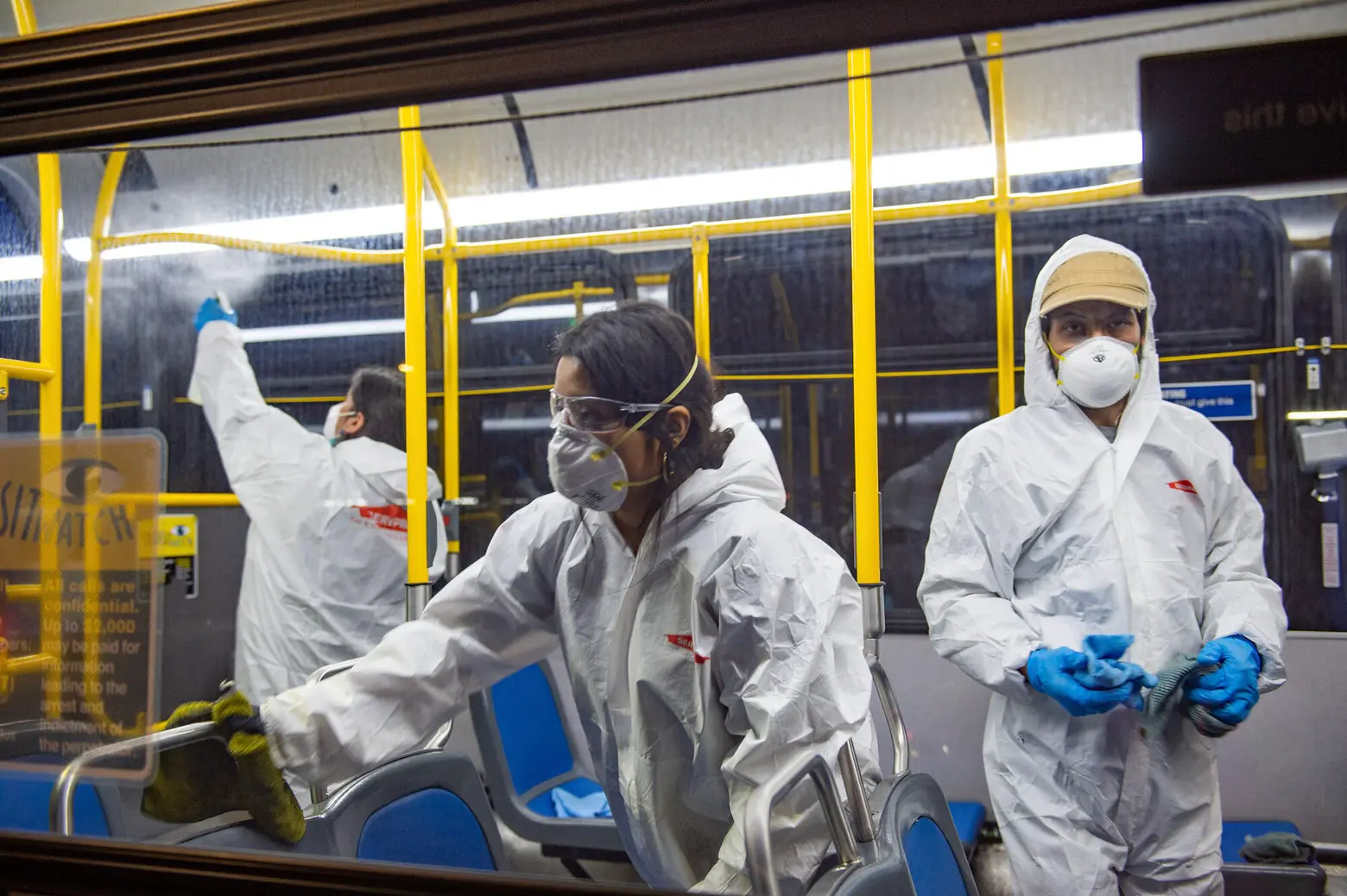
Photo: Trent Reeves / Metropolitan Transportation Authority
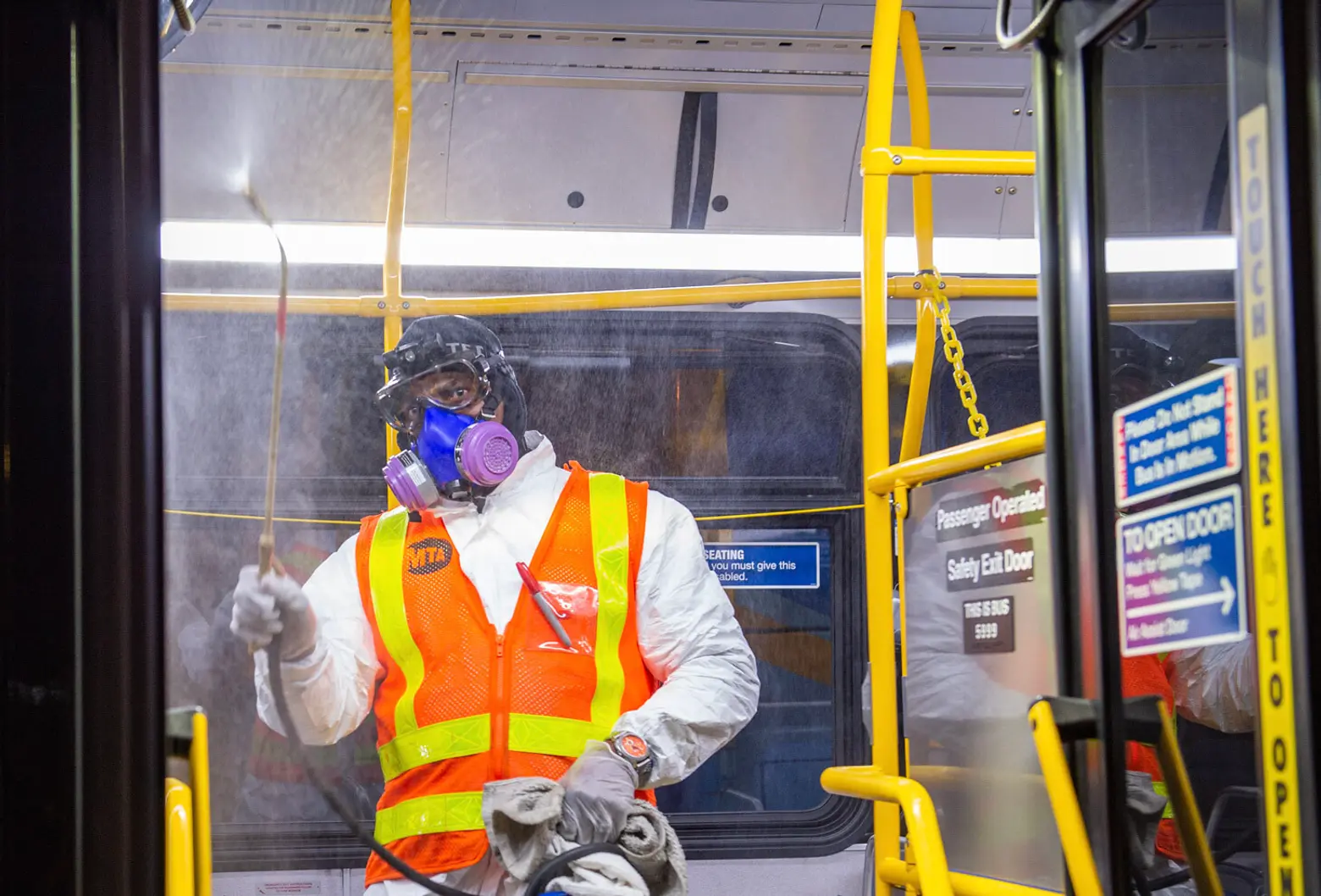
Photo: Trent Reeves / Metropolitan Transportation Authority
The round-the-clock sanitation program involves a daytime terminal car cleaning, which will have crews remove any trash, clean spills and biohazards, and spot clean surfaces, like seats and floors. Trains both running at night (but with no passengers) and those at rail yards will be comprehensively cleaned nightly, which includes the removal of garbage and graffiti, mopping of floors, and disinfecting surfaces.
The MTA said it’s looking into a number of cleaning methods that would “eradicate” traces of the virus, including antimicrobial biostats, which are applied to the interior of buses and the subway following a cleaning.
The treatment is currently being used in electrostatic sprayers as part of a pilot program. The agency is also examining the effectiveness of ultraviolet light in eliminating traces of COVID-19 from surfaces.
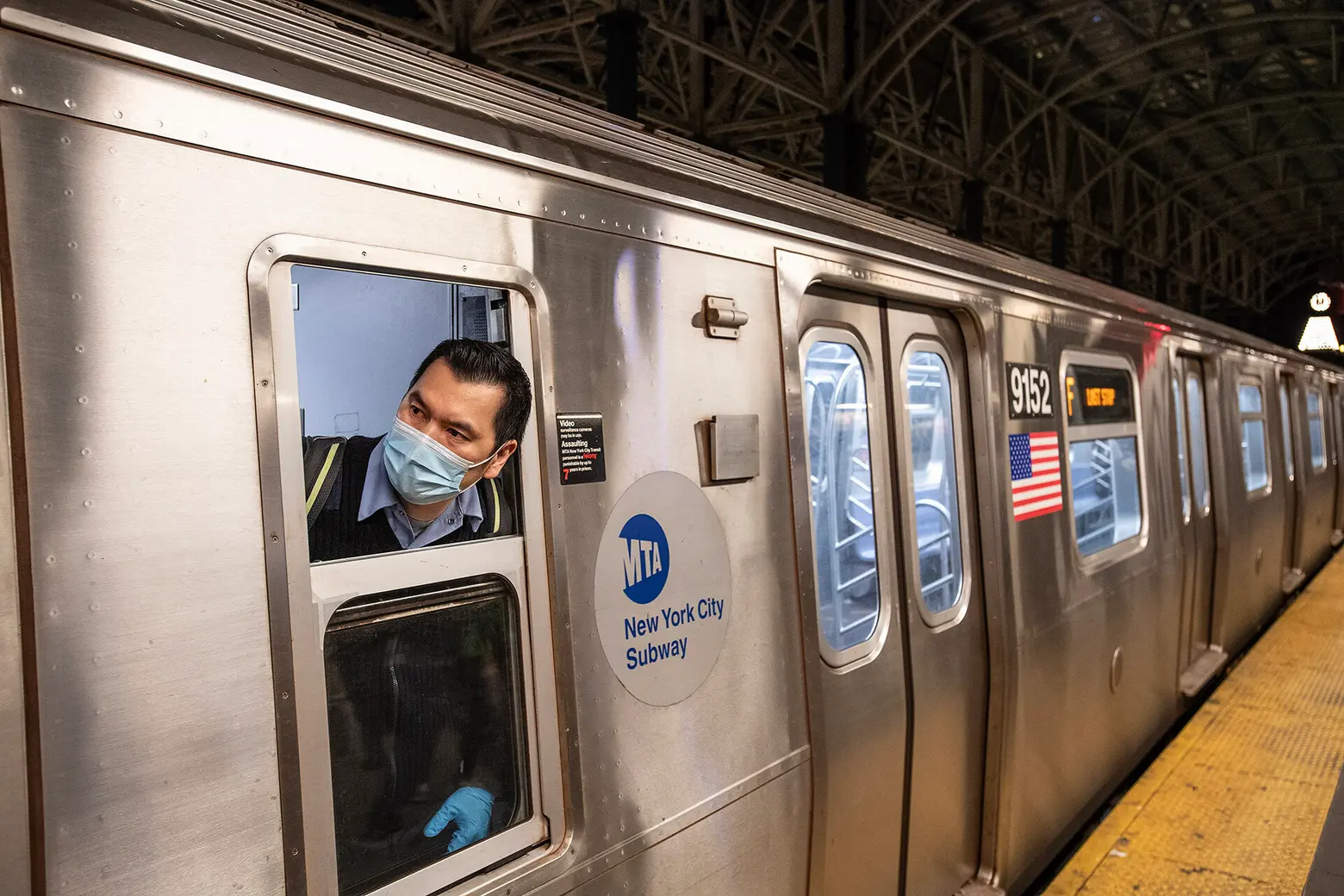
Photo: Patrick Cashin / MTA New York City Transit
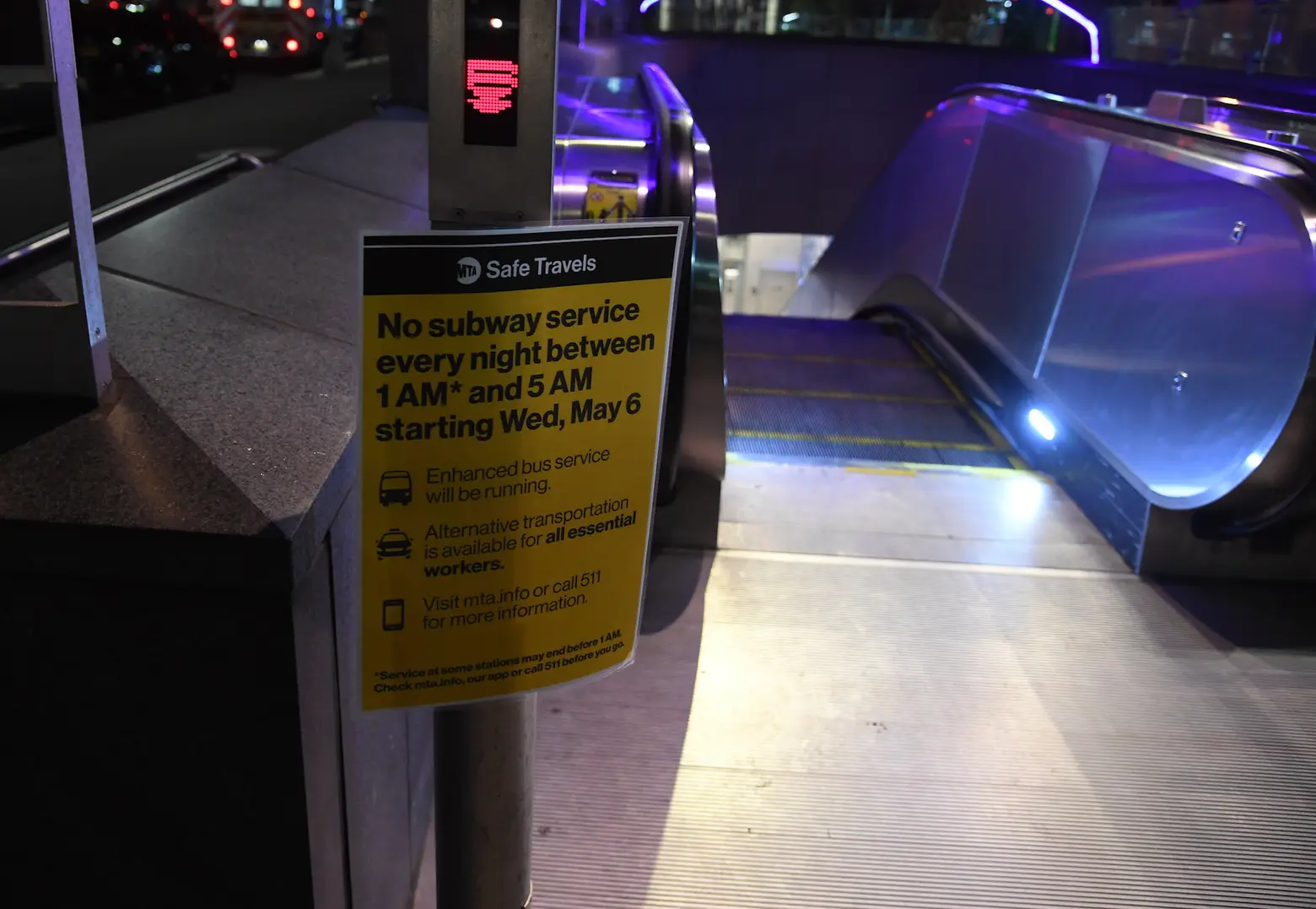
Photo: Marc A. Hermann / MTA New York City Transit
But ending the city’s 24-hour subway service on Wednesday meant thousands of homeless New Yorkers were forced to find refuge elsewhere, with some choosing the bus, shelters, or the streets, waiting for the stations to reopen after 5 a.m. Any person inside a station will be asked to leave by police. NYPD officers and MTA transit police will be deployed to all 472 subway stations overnight to enforce these new regulations.
According to mayoral spokesperson Freddi Goldstein, the city’s outreach teams engaged with 252 homeless New Yorkers and helped move 139 of them to shelters. “It’s unprecedented to have so many successful engagements,” Goldstein tweeted on Wednesday. “Our teams will keep it up daily to help as many people to safety as possible.”
Subway ridership has dropped by more than 90 percent since the start of the pandemic, with bus ridership fallen more than 80 percent. According to the MTA, 11,000 customers use the subway between 1 a.m. and 5 a.m.
RELATED:
